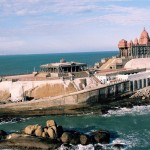History of Kottakkal
Kottakkal was also known as ” Sweta Durgam”(the White Fort) in Sanskrit, ” Venkalikotta ” and ” Venkitta Kotta ” in Malayalam, was a military base of the Kingdom of Valluvanadu in the medieval period. In the first half of the 15th century, Karuvayoor Moosad assassinated Thinayancherry Elayath, one of the ministers of the Zamorin of Calicut. Then Moonnarpadu Thampuran, the cousin of the Zamorin, killed Karuvayoor Moosad in combat and occupied the fort. The descendants of Moonnarpadu Thampuran dwelt in Kottakkal thereafter and the area came under the rule of the Zamorin of Calicut. The invasion of the de facto ruler of the kingdom of Mysore, Tipu Sultan, altered the course of Kottakkal’s history. A kinsman of the Zamorin of Kozhikode who had been sheltered in Travancore, fearing the Mysore invasion, later settled in Kottakkal after the death of Tippu in 1799. Among them was Manorama Thampuratty, a female scholar, from whom the Kottakkal branch of the Zamorin dynasty grew.
All Indian villages were the focus of sudden agricultural developments in the beginning of the 20th century. However, such events did not affect Kottakkal due to the compassionate attitude of the landowners of Kizhake kovilakam. They were strict in matters of lease and they never tortured farmers. The general state of Hindu Muslim landownertenant setup common to the Malabar area was prevalent in Kottakkal also. Kottakkal has had a history of profound religious harmony for centuries. The Moplah Rebellion of 1921, despite widespread riots, did not disturb the peace of this small village. The intervention of P. S. Varier and the forbearance of the kovilakam helped the situation not getting violent. During the first half of 20th century Kottakkal chanda was one of the most dependable cattle fair in Kerala. In that time economical stability of Kottakkal is fully depended upon Kottakkal chanda.Kizhakke kovilakam gave some place to Muslims or mappilas of Parappanangadi and Tirurangadi for trade and commerce.
Firstly it was situated in Kottakkal Bus stand. Later it changed to present place. During the 1921, traders from Tirurangadi were the first informants of Mappila rebellion to Kottakkal area. Then mappilas were marched to Tirurangadi from kottakkal and gave some their own contribution to rebellion In that time Betal leaf and vegetables was most important commodity in market. Local people sold their vegetables in the market. Gulabi (it is a type of tea) was the most dependable water for drink. Traders and buyers from different parts of Malappuram were gathering in every Saturday in week even today. So as far as Kottakkal concerned Saturday is market day










Add Kottakkal History Feedback, Comments, Reviews